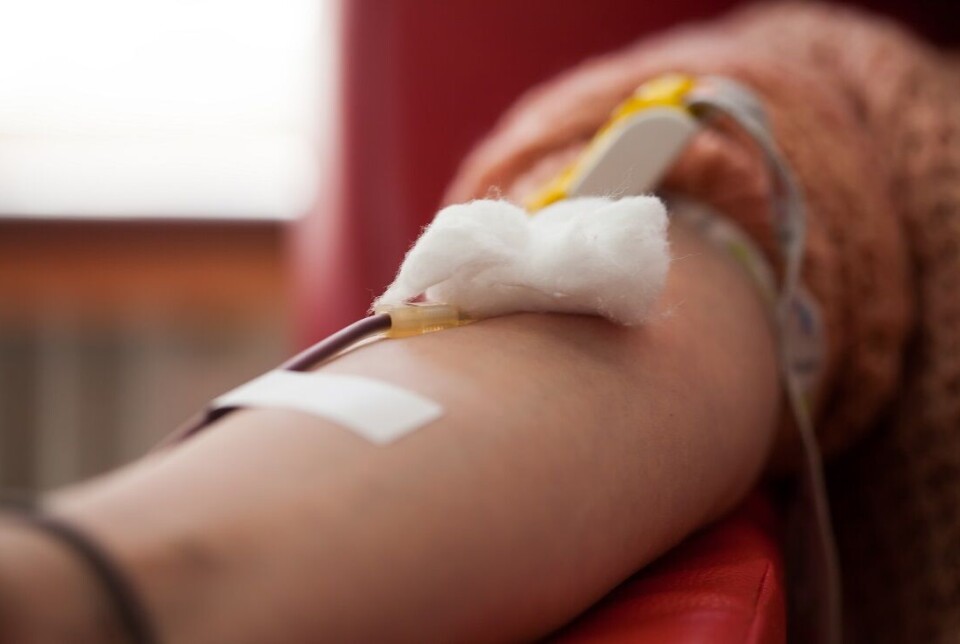THIS CONTENT IS BROUGHT TO YOU BY NTNU Norwegian University of Science and Technology - read more

More people develop sepsis than we thought — but more survive
Sepsis occurs more frequently than previously estimated by experts. At the same, mortality rates have declined sharply. The two are connected.
Sepsis, also colloquially referred to as blood poisoning, is a serious condition. Just over 3,000 people die with a sepsis diagnosis in Norwegian hospitals each year.
However, sepsis is not actually poisoning at all. The condition occurs when the immune system overreacts to an infection that can be caused by bacteria, viruses, fungi, or parasites. The immune system attacks the body's organs, and the patient develops organ failure.

A new study of 300,000 sepsis admissions has found that the condition is more prevalent than previously thought. However, far more patients survive than before, and the increase in cases is largely due to more people developing sepsis repeatedly, rather than dying the first time they contract it.
250 in every 100,000
“Each year, 250 of 100,000 people in Norway develop sepsis for the first time,” Lise Tuset Gustad says. She is a researcher at NTNU, Nord University, and Levanger Hospital.
The research group at NTNU’s Central Norwegian Centre for Sepsis Research has looked at figures for the entire period from 2008 up to and including 2021.
An article about the work has now been published in the British Medical Journal, BMJ Open.
Very strong material helps debunk myths
The researchers conducted what is known as a national registry study, which means the quality of the data is very strong. In such studies, large amounts of data are collected in advance and compiled in a registry.
As far as the researchers are aware, this is the first time a nationwide sepsis study has been carried out over such a long time span, and includes all patients admitted to hospital, not just those who require intensive care.
They found 317,705 hospital admissions due to sepsis in the period from 2008 through 2021. A total of 222,832 of the patients were admitted with sepsis for the first time.

Nina Vibeche Skei is a researcher and a consultant anaesthetist at Levanger Hospital.
“This study helps debunk the myth that an increase in the number of sepsis cases is due to greater awareness of the condition and therefore increased reporting. The proportion of people who developed sepsis for the first time per 100,000 inhabitants remained stable from 2008 through 2021,” Skei says.
Sharp decline in mortality
The study also found that many more people survive than before.
“During this period, mortality rates in hospitals have dropped by no less than 43 per cent for those admitted with sepsis for the first time,” Skei says.
In total, mortality rates in hospitals have decreased by a third, regardless of whether it was the first time the patient had had sepsis, or if they had had it before.
"The reason for the decline in mortality could be increased awareness of the condition and updated treatment guidelines,” she says.
Sepsis mortality increases during the pandemic
During the first two years of Covid-19, the number of hospital admissions with first-time sepsis decreased. Researchers believe this was partly due to social distancing, which led to fewer infections in the general population.
“We also found that fewer people over the age of 70 were admitted to hospital with sepsis. This may have been due to the great amount of pressure on hospitals and the need to prioritise certain patient groups. These priorities resulted in many people over the age of 70 not being admitted to hospital compared to an ordinary year,” Tuset Gustad says.
According to Skei, the mortality rate of sepsis in hospitals increased during the pandemic, especially in 2021.
Covid-19 increased awareness of sepsis
Covid-19 made more people aware that infections could lead to organ failure. Many were frightened by images of patients lying in intensive care units on respirators, first in Wuhan and Italy, and later in Norway. Infections, both bacterial and viral, can lead to organ failure in some patients.
This happens because the immune system in some patients can develop an exaggerated response to infections. The patients may then develop sepsis, which is an infection plus organ failure.
“Covid-19 put sepsis on the map. There was little awareness of sepsis caused by viral infections before the pandemic. The SARS-CoV-2 virus resulted in increased awareness of sepsis caused by the virus in particular, and sepsis in general,” Skei says.
Higher mortality rates with Covid-19 as the cause
“During 2020 and 2021, 30,000 people were admitted with sepsis. Of these, 2,845 were admitted with Covid-19 sepsis. That is around 10 per cent,” Skei says.
Nearly 90 per cent of those with first-time sepsis developed it for reasons other than Covid-19, even during the pandemic.
“However, a greater proportion of those who developed first-time sepsis due to Covid-19 died,” Skei says.
More people with recurring sepsis
The figures also show that more people are developing repeated bouts of sepsis than before.
“Hospital admissions with recurring sepsis have increased during this period. The increase is primarily due to a doubling in recurring sepsis episodes among patients over the age of 60,” Skei says.
In people over 80, recurring sepsis increased more than fivefold in 2021 compared to 2008.

“The cause is likely that we have become better at treating other medical conditions such as cancer, and that we live longer. Patients with a weakened immune system and the elderly are more susceptible to both first-time and recurring sepsis,” she says.
Follow-up required
The results therefore contradict what many professionals previously believed. They believed that the increase in sepsiswas due to changed regulations for the coding of sepsis diagnoses. But that is not the case.
“We used the same codes for sepsis throughout the entire study period, so we know that these are real changes,” Tuset Gustad says.
The results are likely unique both on a global level and in Norway. Previous Norwegian studies are old. The most recent used data from 2011 and 2012 and shows survival trends for sepsis for a period of only two years. This study, on the other hand, looks at sepsis trends over a 14-year period.
“Being able to distinguish between first-time and recurring sepsis is unique on a global level and this is thanks to the excellent medical registries in Norway,” Tuset Gustad says.
“Our results should have implications for clinicians and politicians — and for health policy planners. The burden of sepsis is greater than research communities previously thought," Skei says.
She adds that in particular, we must focus attention on the large increase in patients who get sepsis multiple times and find preventive measures for this patient group.
“Health policy planners need to take these results into account. We need to make the effort to prevent recurring sepsis,” Tuset Gustad says.
Reference:
Skei et al. Long-term temporal trends in incidence rate and case fatality of sepsis and COVID-19-related sepsis in Norwegian hospitals, 2008–2021: a nationwide registry study, BMJ Open, vol. 13, 2023. DOI: 10.1136/bmjopen-2023-071846
———
Read the Norwegian version of this article at forskning.no
More content from NTNU:
-
Politics on Facebook: Populist parties choose divisive issues on purpose
-
Social media is connected to cyberbullying – but not how we thought
-
Forskere ved NTNU får nesten 24 millioner av EU for å lage nye strømomformere
-
This helps the youngest children enjoy school more
-
Can we tap the ocean’s power to capture carbon?
-
Researchers have uncovered major problems in Norway's salmon industry





































